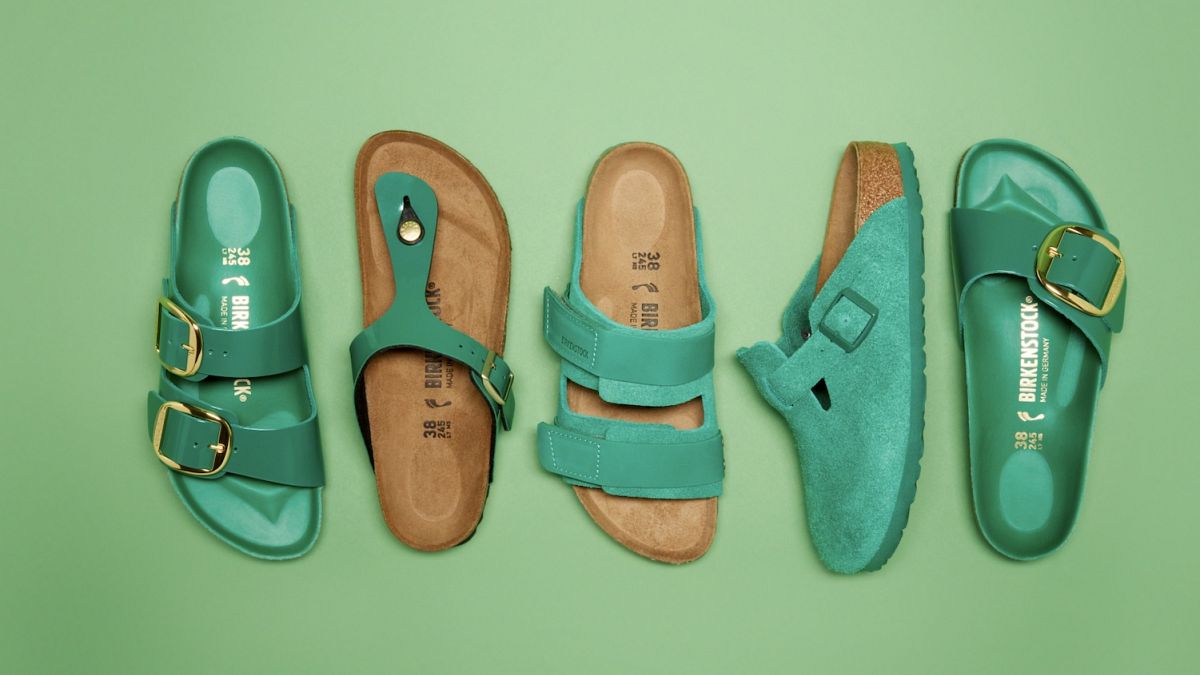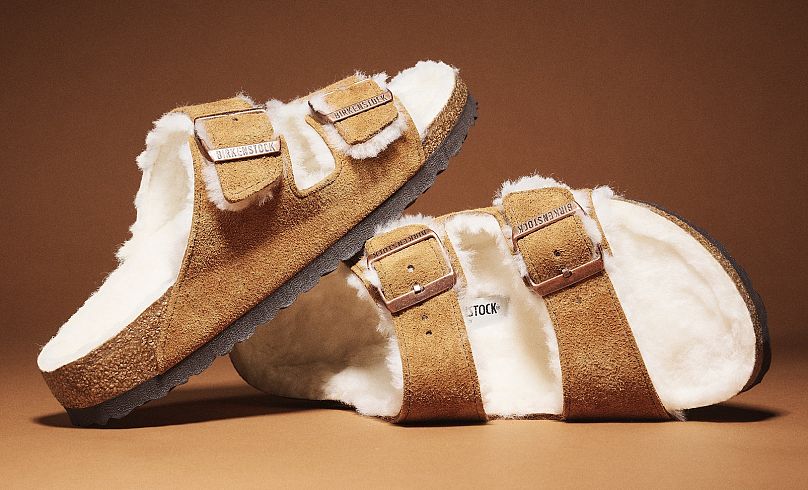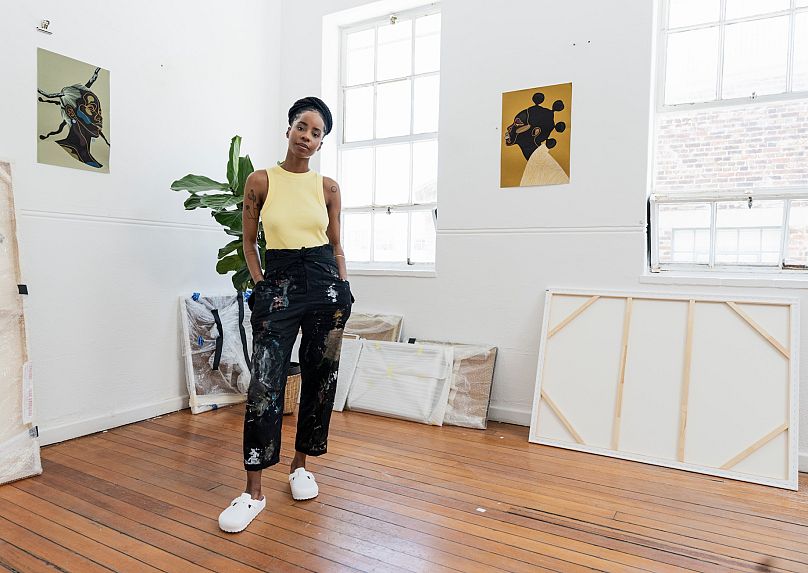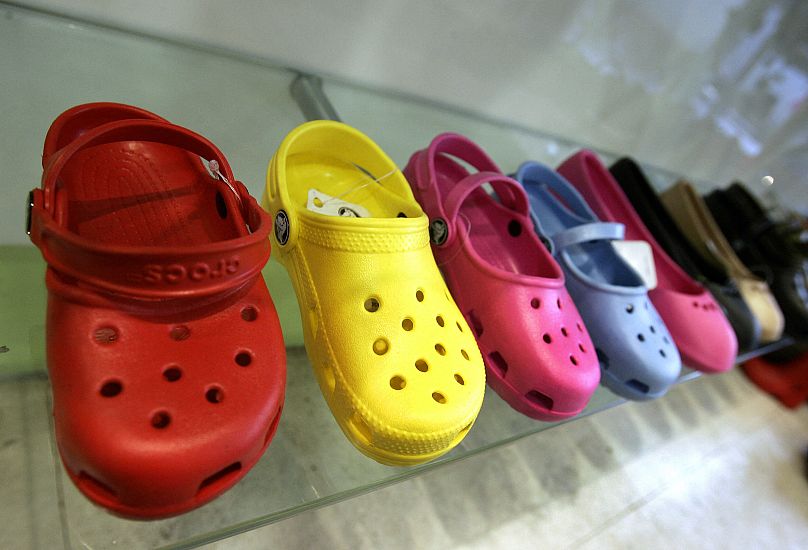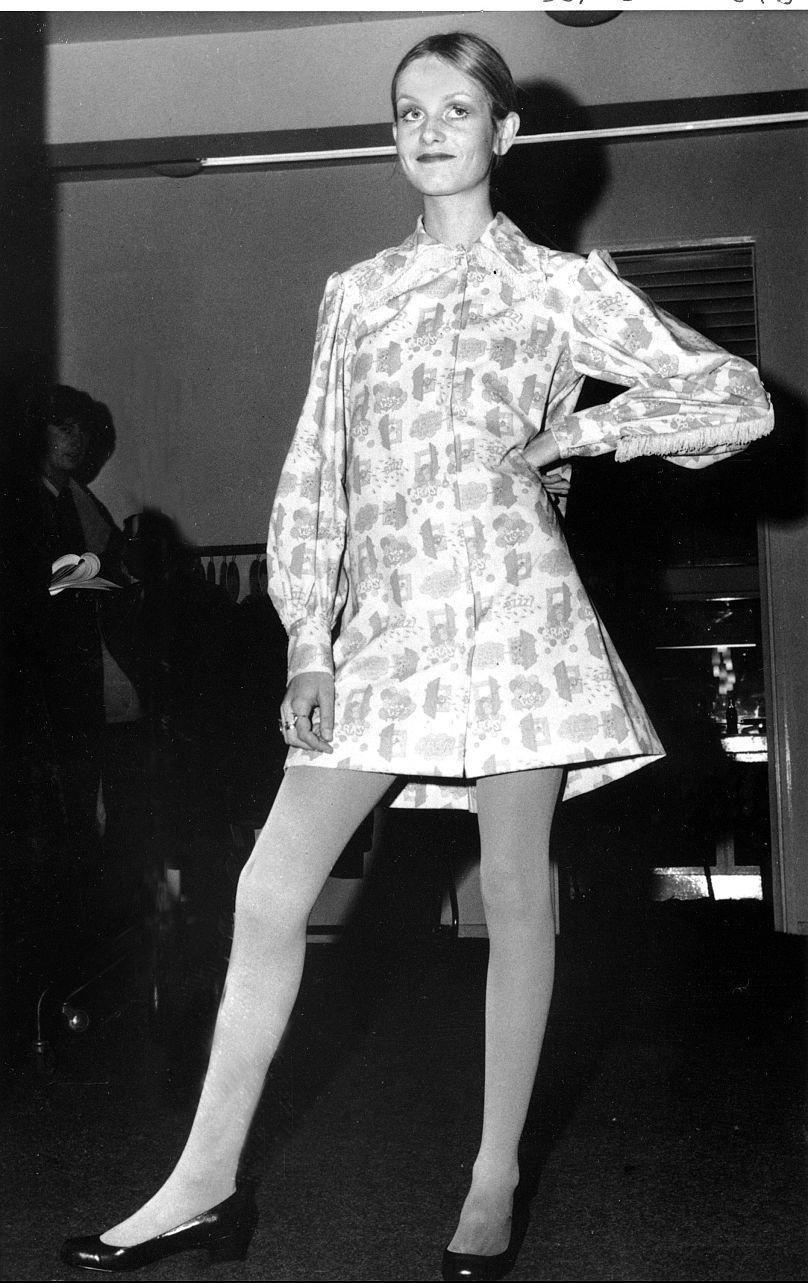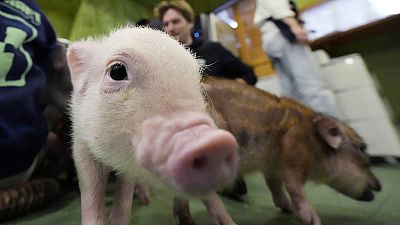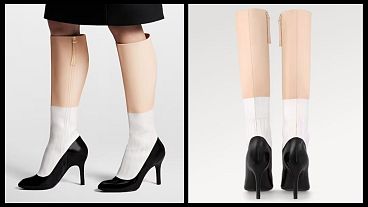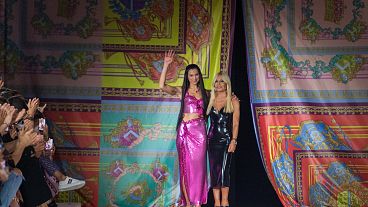This summer saw the rise of the ugly shoe trend. With oft-maligned German sandal maker Birkenstock set to float on NY stock market, we ask: Could this call for comfort stem from feminism?
The "ugly shoe" was one of this summer's most surprising trends.
From luxury catwalks to appearing as a cameo in the famed Barbie film, shoes such as the Birkenstock are seemingly everywhere.
The cork-soled shoemaker has even debuted on the New York Stock Exchange on Wednesday under the “BIRK” ticker symbol and valued at $8.6 billion before IPO.
To some, it might seem odd that such physically unappealing shoes are making waves on the fashion scene. However, this just might be the reason behind their climb to fame.
Over the years, women's clothes have often rhymed with discomfort and oppression. The often considered 'ugly' shoe breaks away from conventional beauty standards and offers a sense of comfort the prettier high-heel can't.
Social media has contributed to the ugly shoe's rise. Through TikTok and Instagram, a wave of influencers are keen to express their creativity by embracing unconventional styles. With millions of views only a click away, trends are quickly popularised. This has been the case with the ugly shoe. Many influencers and celebrities are sporting these trends on various platforms and we've been quick to get our hands on the items ourselves.
This trend also lends itself to the "anti-fashion" or "ugly-chic" movements recently seen in the industry. People are challenging conventional beauty standards. By taking to social media and embracing so-called ugly fashion, wearers want to affirm their individuality and reject mainstream fashion.
These shoes come in all shapes and sizes. Here are a few examples.
Birkenstocks
The first ever Birkenstock was designed by Konrad Birkenstock in 1897 in Germany. He wanted to create the most comfortable footwear possible. In achieving this, he brought to life the now-dubbed orthopaedic shoe.
Little did he know a decade later, his invention would be seen on luxury catwalks.
In 1997, the shoes walked down designers Narciso Rodriguez and Paco Rabanne's runways. The sight gave women all around a sense of relief. It was time to swap out high heels for something a little more comfortable.
Now universally adopted, the Birkenstock seems hard to escape. With collaborations such as Dior x Birkenstock or Birkenstock x Valentino, the shoe is more popular than ever.
Why not take the ugly trend further by adding a pair of socks?
Crocs
The brand Crocs was founded in 2001. Originally, the shoes were designed for boaters. That's why they're composed of grip-focused soles, waterproof materials and are easy to slip on or off.
However, celebrities and fashion labels took the shoe in and turned it into a - questionable - fashion staple.
Crocs has seen many collaborations. Fashion house Balenciaga made the ugly uglier by adding thick platforms and skinny heels. And in his version, Scottish designer Christopher Kane added some colour with decorative rocks.
More recently, fashion designer Feng Chen Wang launched her own collaboration with the brand. The collection features two looks. Creatively conceived, the shoes have detachable pieces, allowing people the wear them in multiple ways.
Vibram FiveFingers
Mountaineer Robert Fliri is behind the conception of Vibram FiveFingers. He wanted to create shoes that would allow him to trek as though he were barefoot, without hurting his feet.
In the late 2000s, sports fanatics couldn't get enough of the product. People were wearing them on anything from local 5km runs to marathons.
Soon, the fashion industry got its hands on the product. Celebrities were seen wearing them in the street, absolutely spiking their popularity. Balenciaga created a Vibram line. The fashion house turned the sports shoe into a heel. Singer Rihanna, posted a picture of herself wearing the latter on her Instagram - which was enough for them to get the seal of approval.
Dad trainers
These trainers are stereotypically worn by dads for comfort over style.
The dad trainer has been around for a while and there's no sign of the trend retiring anytime soon. Many high-end brands have brought out their versions - pushing the shoe's popularity to new highs.
Around since the 1980's, the dad shoe made a recent comeback. In 2017, Balenciaga brought dad trainers to the fashion scene with the launch of Triple S. The thick sportswear-esque trainers align comfort with everyday wear. At the time, it pushed the dad-inspired trend to the extreme with its ridiculous and unnecessarily big proportions.
The shoe's made up of three different soles - each piled on top of the other - and usually features many different colours. The fashion brand Yeezy also took to the trend with its launch of the 700 Wave Runner.
Ugly fashion = a rebellious act?
The rise in popularity of the ugly shoe can be put down to a desire for comfort - although unattractive, they are comfortable to wear.
Unlike traditional footwear, these shoes were designed with functionality in mind. They feature supportive and thick soles, wide widths and lasting materials. As a new era of fashion takes over, this rejection of traditional beauty standards comes as a relief for women - fashion and pain are no longer synonyms.
Ugly fashion can be seen as a rebellious act against societal expectations - fashion isn't always about looking good. These unflattering products leave more room for individuality and creativity.
Throughout history, feminism and fashion have often been intertwined. Women's emancipation has been noticeable through their clothing. In 1800, feminist Amelia Bloomer wanted women to feel more comfortable in their clothing and invented "bloomers". The loose, more functional garment was to be worn underneath a below-the-knee skirt and gathered at the ankle. It quickly became controversial and retired from fashion. However, it remains a symbol of the feminist movement.
The 1900s saw the rise of the "new woman" as trousers for women were brought to the West and women's dresses fell just below the knee - allowing them to be more active. However, after the Second World War, the movement took a step backwards. Some restrictive garments came back into fashion such as red lipstick and heels.
In the 1960s and 1970s, British Designer Mary Quant invented the mini-skirt - the mark of the sexual revolution.
No longer bound to household chores, women's wardrobes reflected exciting new possibilities that lay ahead. "Power dressing" closely followed. As women took on leading roles, they found a more masculine way of dressing - some looks included matching skirts and padded blazers.
As women still look for comfort and individuality in their clothing, can the ugly shoe be the leading trend of a new wave of feminism?
